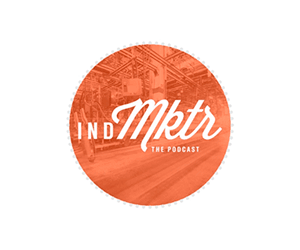If you take the idea of online industrial supply seriously and have made an investment in an e-commerce website, you definitely want to get the most for your money. There’s a lot of potential, but it’s also incredibly competitive.
For one, many smaller industrial distributors and OEMs that have decided to take the plunge have limited resources but are competing against massive industrial e-commerce leaders. They can’t do everything they would ideally like to in order to make their online industrial supply venture succeed.
Online industrial supply companies that find themselves in this sort of situation need to prioritize features and updates for quick wins that will help them achieve ROI on their investment in an e-commerce or e-commerce-like website (e.g., a catalog site with cart functionality that leads customers to an RFQ, rather than direct checkout).
With these small- to medium-sized companies in mind, here are five straightforward things you can do to improve the performance of your online industrial supply catalog.
1. Speed Up Your Site Load Time
Back in 2012, TagMan partnered with Glasses Direct to study the effects of load times on e-commerce conversions. One of the conclusion of this widely-cited case study was that a one-second delay could lead to a 7% loss in conversions. For a high-price-point online industrial supply catalog, that could be tens or hundreds of thousands of dollars per day.
Per KISSMetrics, 47% of consumers expect a web page to load in two seconds or less while 40% abandon the site if it takes more than three seconds to load. And that was back in 2011.
Earlier this year, Forbes conducted a site speed experiment and concluded that the 2-second mark is still the cut-off point.
So how do you make your industrial e-commerce site more nimble? Here are three easy suggestions your developer can follow to speed up your website. They include minimizing HTTP requests, removing render-blocking JavaScript, and enabling compression.
You can also use the Google Developers PageSpeed Insights tool tool to get some additional suggestions specific to your site.
Optimize your industrial e-commerce site by avoiding these 7 deadly sins.
2. Add a Search Bar or Improve Your Existing One
If your online industrial supply catalog doesn’t have a search bar, please get one.
A free and easy way to add a search bar to your site is to use a Google Custom Search Engine. But really you should talk to your developer, who will be able to install something specific to your site.
Assuming you do have a search bar, you’ll want to engineer it so that it responds to how your customers search for products. Every industry has its own vernacular and often there are variant terms for the same product. For example, an industrial facility manager may be looking for “compression packing” but choose to enter the term “compression seals” in your search bar.
Or, if your customers like to search by product code, there may be frequently dropped digits, misreadings, or transpositions in their search terms. For example, item number “4VKW8” may end up registering as “4VKW,” “4VKWB,” or “4VWK8.” You’ll want your search results to account for these frequent minor errors, as well as odd punctuation (e.g., hyphens) and intentional brand-name misspellings.
Bottom line: Make sure your search experience is designed for your customers.
3. Write Your Own Content
If you populate your online industrial supply site with the content OEMs give you, you’re inevitably going to run into issues with offsite duplicate content. This is because most of the other distributors out there who are selling the products had the same idea: List the items on their website using the default copy, images, and specification tables provided by the manufacturer.
As this article about offsite duplicate content explains, search engines get confused by sites with duplicate content and have a tendency to suppress them from search results. This means that it is unlikely a customer will find your online industrial supply catalog if they are looking for the products you listed using OEM-provided product descriptions.
The solution? Change your content enough so that it is unique. This process could include rewriting product descriptions, generating product reviews, inviting users to submit their own photos, or creating custom specification tables — anything that helps you stand out. The thought of doing this for thousands of SKUs is daunting but you can start by creating your own content for top sellers or marquee products.
4. Create Consistent Visuals
Let’s talk specifically about visual content. If you have OEMs supplying you photos, chances are they are the same ones everyone else is using. For individual products, this makes perfect sense.
But how are you treating your product overview pages? If you’re using stock photography or badly Photoshopped collages, your user engagement is going to suffer.
Consider a custom photo shoot to create the right branded experience on your home page, product overview pages, and for any promotional banners you may use on your site for seasonal sales or member discounts.
Moreover, a custom photo shoot will result in hi-res images that you could repurpose for online and offline collateral, including advertisements, brochures, line cards, and sell sheets.
5. Start a Remarketing Program
Cart abandonment is one of the most frustrating phenomena that plagues online retailers. It’s frustrating to have basically paid the entire cost of new customer acquisition, only to be denied at the last minute.
While it won’t turn all of your abandoned carts into sales, starting a remarketing ad program can at least recoup some of them. Even if they didn’t provide an email address, your site should be linked to that customer via a cookie — a digital fingerprint that follows the customer wherever they go online —when a user abandons your checkout cart.
Using that cookie, you can continue to send ads to your almost-customers across Google’s large display and text advertising networks. Or, send them reminders on Facebook, LinkedIn, or YouTube to entice them back to your online industrial supply catalog.
More Ways to Optimize Your Online Industrial Supply Catalog
The above suggestions are all things the team that manages your online industrial supply site should be able to tackle fairly easily.
For more advanced recommendations on how to improve the performance of your online catalog or e-commerce site, make sure to download our free eBook, “Update Your Online Catalog Already! 7 Deadly Sins That Are Costing You Leads.”
The additional tips inside include suggestions for how to handle filters, pricing, and bad product data.
And if you still need help, you can always reach out to us at Industrial Strength Marketing.




